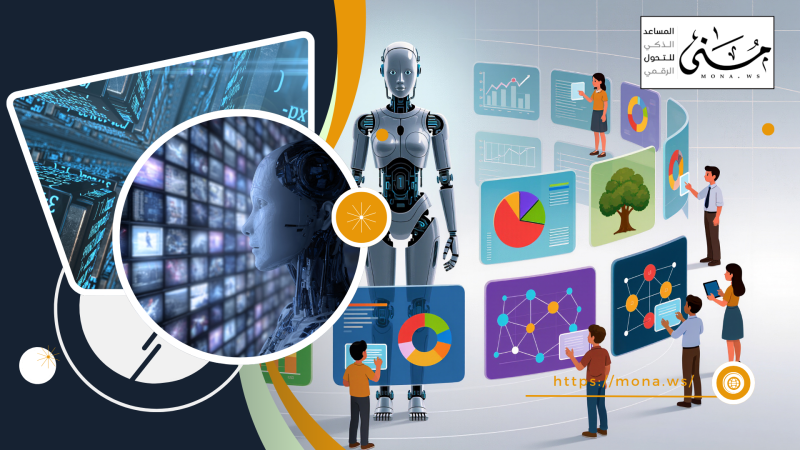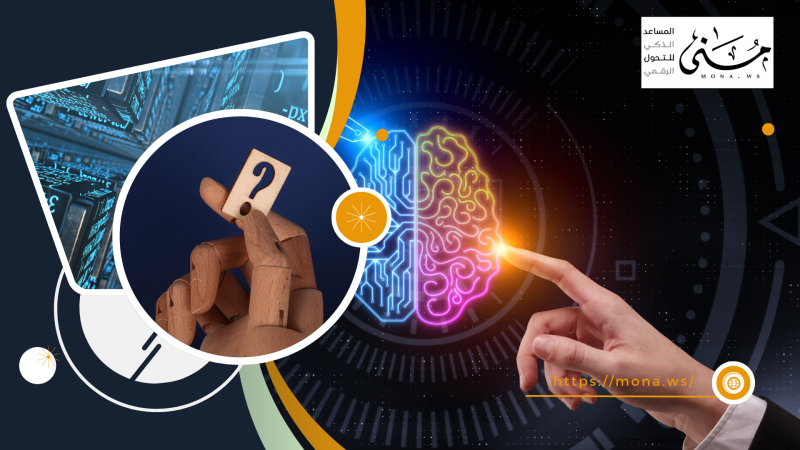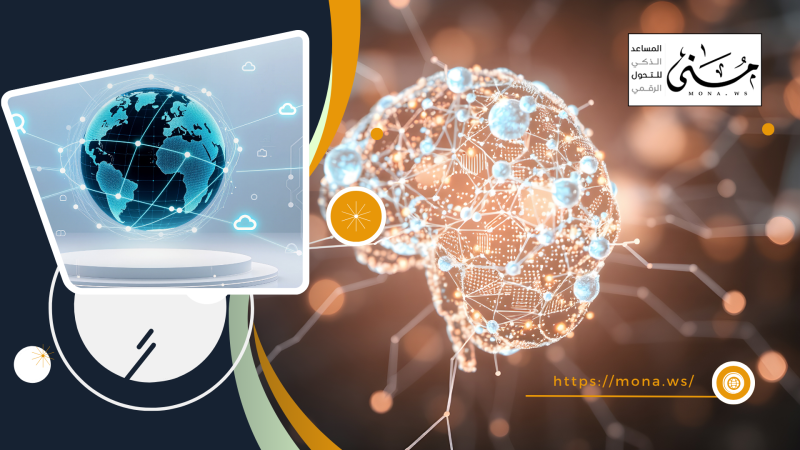Is it possible to switch to digital document management without confusing employees?
In the modern business world, adopting a smart and effective document management system is indispensable, but the challenge lies in implementing this transformation without affecting daily workflow. Many organizations fear disruption to operations or resistance from internal teams when implementing new systems such asECM or DocSuite.
Therefore, adopting a document management system requires thoughtful steps that ensure continuous performance and the achievement of objectives without disruption. Continue reading the article to learn more.
Steps to adopt a document management system without disrupting workflow
The steps to adopting a document management system without disrupting workflow are:
First: Evaluate the current work environment
Before embarking on any digital transformation, it's important to examine the current way your organization's documents are managed. What paper or digital systems are in use? What is the volume of documents? Who handles them? This assessment is essential to understanding technical and human gaps and developing a realistic transition plan.
Second: Clearly define goals.
What do we want from the new system?It's not enough to simply say we want a modern document management system; tangible outcomes must be defined: Do we want to speed up access to documents? Do we aim to reduce document loss? Or do we focus on compliance and documentation? Defining goals precisely makes the adoption process more focused and effective.
Third: Choosing the most appropriate system for the organization
What makes the system special?DocSuite in document management?
The chosen system must be able to adapt to the organization's structure and needs. A prominent example is the systemDocSuite, which enables intelligent document management including archiving, version control, revision tracking, and linking documents to tasks and projects, also offers an easy-to-use experience that enables teams to seamlessly transition without the need for advanced technical expertise.
Fourth: Involving all parties in the decision
Are secretaries and project managers involved?To ensure the successful adoption of any document management system, end users must be involved from the outset. Secretaries, project managers, administrative staff, and human resources professionals all need to understand the importance of this transformation and its direct benefits to their daily tasks.
Fifth: The experimentation and gradual adaptation phase
Why don't we move the whole organization at once?
The best strategy for implementing digital document management is to work gradually. The system can be piloted on a single department or project, obstacles identified, technical support and training provided, and then scaled up gradually. This reduces the risk of operational chaos.
Sixth: Continuous training and empowerment
Does training guarantee the success of the system?
Without effective training, no document management system can achieve success. Training does not only mean explaining user interfaces, but also includes instilling a culture of information security, file organization, and smart archiving concepts. Hence, platforms such asDocSuite plays an important role because it provides integrated educational and training resources.
Seventh: Performance monitoring and continuous improvement
Were the goals achieved?
After implementing the system, it is important to track performance indicators related to document management, such as document access time, the number of lost documents, or the degree of institutional compliance. Improvement does not stop at the implementation stage; rather, it is an ongoing process based on data analysis and interaction with users.
What do organizations achieve from a successful transition to intelligent document management?
Organizations gain many benefits from intelligent document management, including:
- Speed up the process of transactions
Intelligent document management systems reduce the time wasted searching for paper files, which improves decision-making and transaction processing speed.
- Achieving full corporate compliance
Systems such asDocSuite ECM provides accurate archiving and documentation tools that ensure regulatory and audit requirements are met.
- Enhancing information security
Intelligent document management systems include multiple levels of authorization, encryption, and secure login, ensuring sensitive information is protected.
- Reducing operational costs
By reducing reliance on paper and reducing storage space, costs are significantly reduced.
- Supporting management decisions with data
With the ability to link documents to processes, management can make decisions based on documented documents and accurate data.
How do organizations manage the transition process successfully?
Successful implementation of intelligent document management systems is not just about having a robust digital platform, but rather about changing the entire way an organization thinks. A culture of paper reliance, reluctance to share files electronically, and resistance to change are all barriers that require thoughtful change management strategies.
There are several steps to change management associated with an intelligent document management system, which are:
- Building a shared vision for transformation
There must be a clear vision explained to all employees, explaining why we are moving to digital document management and what the organization will gain from it. This vision must be part of the organization's senior leadership discourse.
- Appointing a change leadership team
A specialized team should be formed, including representatives from different departments, to be responsible for facilitating the implementation of the smart document management system, following up on user feedback, suggesting improvements, and coordinating with the system provider, such asDocSuite.
- Continuous communication with employees
Through meetings, emails, and interactive workshops, the importance of smart document management can be explained in a clear and motivating way. The greater the transparency, the less resistance to change.
- Reward positive interaction
Experience shows that rewarding teams that effectively adopt the new system accelerates the transition process. Whether it's with moral or financial rewards, it boosts motivation and reduces resistance.
How do we know that the document management system has performed its role?
You can measure the performance of your smart document management system by:
- Key Performance IndicatorsKPIs
Metrics such as document access time, number of approved edits, number of document recalls, and file error rate should be tracked.
- End user satisfaction
Do users feel the system is easy to use? Have complaints decreased? Daily surveys and feedback provide a realistic reading of the impact of the intelligent document management system.
- The extent of teams' compliance with the new procedures
The higher the compliance rate with the system, the more deeply embedded the digital document management culture is, ensuring its continuity.
How do you choose the most appropriate system to manage your organization's documents?
Choosing the right system for intelligent corporate document management is one of the most important technical and administrative decisions that impacts workflow and the success of digital transformation processes. The ideal system is not only one that offers digital features, but also one that aligns with the organization's culture, data volume, and user base. Therefore, careful, thoughtful steps must be taken before adopting any system.
Criteria for selecting a successful document management system
- Compatibility with the existing administrative structure
The system should support the existing administrative structure without complexity, and allow for the management of permissions according to departments and users, so that the document management process remains flexible and secure.
- Support for smart archiving and advanced search
A robust system offers intelligent archiving capabilities, enabling users to access any document within seconds, even if it's years old. Therefore, advanced search engines, tags, and classifications are essential for any advanced document management environment.
- Ease of use and training
If a system isn't simple and easy to use, adoption rates will be low. Training must be accessible and seamless, so teams can perform document management tasks without the need for constant technical support.
- Integration with other systems
Systems don't operate in isolation, so it's important for a document management system to be able to integrate with other systems in the organization, such as human resources, finance, and project management, contributing to a unified digital environment.
- Security and Compliance
The system must support the highest standards of digital security, including access rights, encryption, and transaction tracking, especially if the organization handles sensitive documents or is subject to legal oversight.
Moving from traditional paper-based systems to smart document management such as:DocSuite ECM isn't just about improving archiving and document organization. It's an investment in the organization's future, its speed of performance, its information security, and the effectiveness of its decisions. The transformation journey requires courageous leadership, continuous training, and a flexible system that keeps pace with the organization's growth and expansion.
Is it possible to switch to digital document management without confusing employees?
In the modern business world, adopting a smart and effective document management system is indispensable, but the challenge lies in implementing this transformation without affecting daily workflow. Many organizations fear disruption to operations or resistance from internal teams when implementing new systems such asECM or DocSuite.
Therefore, adopting a document management system requires thoughtful steps that ensure continuous performance and the achievement of objectives without disruption. Continue reading the article to learn more.
Steps to adopt a document management system without disrupting workflow
The steps to adopting a document management system without disrupting workflow are:
First: Evaluate the current work environment
Before embarking on any digital transformation, it's important to examine the current way your organization's documents are managed. What paper or digital systems are in use? What is the volume of documents? Who handles them? This assessment is essential to understanding technical and human gaps and developing a realistic transition plan.
Second: Clearly define goals.
What do we want from the new system?It's not enough to simply say we want a modern document management system; tangible outcomes must be defined: Do we want to speed up access to documents? Do we aim to reduce document loss? Or do we focus on compliance and documentation? Defining goals precisely makes the adoption process more focused and effective.
Third: Choosing the most appropriate system for the organization
What makes the system special?DocSuite in document management?
The chosen system must be able to adapt to the organization's structure and needs. A prominent example is the systemDocSuite, which enables intelligent document management including archiving, version control, revision tracking, and linking documents to tasks and projects, also offers an easy-to-use experience that enables teams to seamlessly transition without the need for advanced technical expertise.
Fourth: Involving all parties in the decision
Are secretaries and project managers involved?To ensure the successful adoption of any document management system, end users must be involved from the outset. Secretaries, project managers, administrative staff, and human resources professionals all need to understand the importance of this transformation and its direct benefits to their daily tasks.
Fifth: The experimentation and gradual adaptation phase
Why don't we move the whole organization at once?
The best strategy for implementing digital document management is to work gradually. The system can be piloted on a single department or project, obstacles identified, technical support and training provided, and then scaled up gradually. This reduces the risk of operational chaos.
Sixth: Continuous training and empowerment
Does training guarantee the success of the system?
Without effective training, no document management system can achieve success. Training does not only mean explaining user interfaces, but also includes instilling a culture of information security, file organization, and smart archiving concepts. Hence, platforms such asDocSuite plays an important role because it provides integrated educational and training resources.
Seventh: Performance monitoring and continuous improvement
Were the goals achieved?
After implementing the system, it is important to track performance indicators related to document management, such as document access time, the number of lost documents, or the degree of institutional compliance. Improvement does not stop at the implementation stage; rather, it is an ongoing process based on data analysis and interaction with users.
What do organizations achieve from a successful transition to intelligent document management?
Organizations gain many benefits from intelligent document management, including:
- Speed up the process of transactions
Intelligent document management systems reduce the time wasted searching for paper files, which improves decision-making and transaction processing speed.
- Achieving full corporate compliance
Systems such asDocSuite ECM provides accurate archiving and documentation tools that ensure regulatory and audit requirements are met.
- Enhancing information security
Intelligent document management systems include multiple levels of authorization, encryption, and secure login, ensuring sensitive information is protected.
- Reducing operational costs
By reducing reliance on paper and reducing storage space, costs are significantly reduced.
- Supporting management decisions with data
With the ability to link documents to processes, management can make decisions based on documented documents and accurate data.
How do organizations manage the transition process successfully?
Successful implementation of intelligent document management systems is not just about having a robust digital platform, but rather about changing the entire way an organization thinks. A culture of paper reliance, reluctance to share files electronically, and resistance to change are all barriers that require thoughtful change management strategies.
There are several steps to change management associated with an intelligent document management system, which are:
- Building a shared vision for transformation
There must be a clear vision explained to all employees, explaining why we are moving to digital document management and what the organization will gain from it. This vision must be part of the organization's senior leadership discourse.
- Appointing a change leadership team
A specialized team should be formed, including representatives from different departments, to be responsible for facilitating the implementation of the smart document management system, following up on user feedback, suggesting improvements, and coordinating with the system provider, such asDocSuite.
- Continuous communication with employees
Through meetings, emails, and interactive workshops, the importance of smart document management can be explained in a clear and motivating way. The greater the transparency, the less resistance to change.
- Reward positive interaction
Experience shows that rewarding teams that effectively adopt the new system accelerates the transition process. Whether it's with moral or financial rewards, it boosts motivation and reduces resistance.
How do we know that the document management system has performed its role?
You can measure the performance of your smart document management system by:
- Key Performance IndicatorsKPIs
Metrics such as document access time, number of approved edits, number of document recalls, and file error rate should be tracked.
- End user satisfaction
Do users feel the system is easy to use? Have complaints decreased? Daily surveys and feedback provide a realistic reading of the impact of the intelligent document management system.
- The extent of teams' compliance with the new procedures
The higher the compliance rate with the system, the more deeply embedded the digital document management culture is, ensuring its continuity.
How do you choose the most appropriate system to manage your organization's documents?
Choosing the right system for intelligent corporate document management is one of the most important technical and administrative decisions that impacts workflow and the success of digital transformation processes. The ideal system is not only one that offers digital features, but also one that aligns with the organization's culture, data volume, and user base. Therefore, careful, thoughtful steps must be taken before adopting any system.
Criteria for selecting a successful document management system
- Compatibility with the existing administrative structure
The system should support the existing administrative structure without complexity, and allow for the management of permissions according to departments and users, so that the document management process remains flexible and secure.
- Support for smart archiving and advanced search
A robust system offers intelligent archiving capabilities, enabling users to access any document within seconds, even if it's years old. Therefore, advanced search engines, tags, and classifications are essential for any advanced document management environment.
- Ease of use and training
If a system isn't simple and easy to use, adoption rates will be low. Training must be accessible and seamless, so teams can perform document management tasks without the need for constant technical support.
- Integration with other systems
Systems don't operate in isolation, so it's important for a document management system to be able to integrate with other systems in the organization, such as human resources, finance, and project management, contributing to a unified digital environment.
- Security and Compliance
The system must support the highest standards of digital security, including access rights, encryption, and transaction tracking, especially if the organization handles sensitive documents or is subject to legal oversight.
Moving from traditional paper-based systems to smart document management such as:DocSuite ECM isn't just about improving archiving and document organization. It's an investment in the organization's future, its speed of performance, its information security, and the effectiveness of its decisions. The transformation journey requires courageous leadership, continuous training, and a flexible system that keeps pace with the organization's growth and expansion.
 تعرف على أهم خطوات تبني نظام إدارة مستندات دون تعطيل سير العمل
تعرف على أهم خطوات تبني نظام إدارة مستندات دون تعطيل سير العمل








Comments
Add New Comment